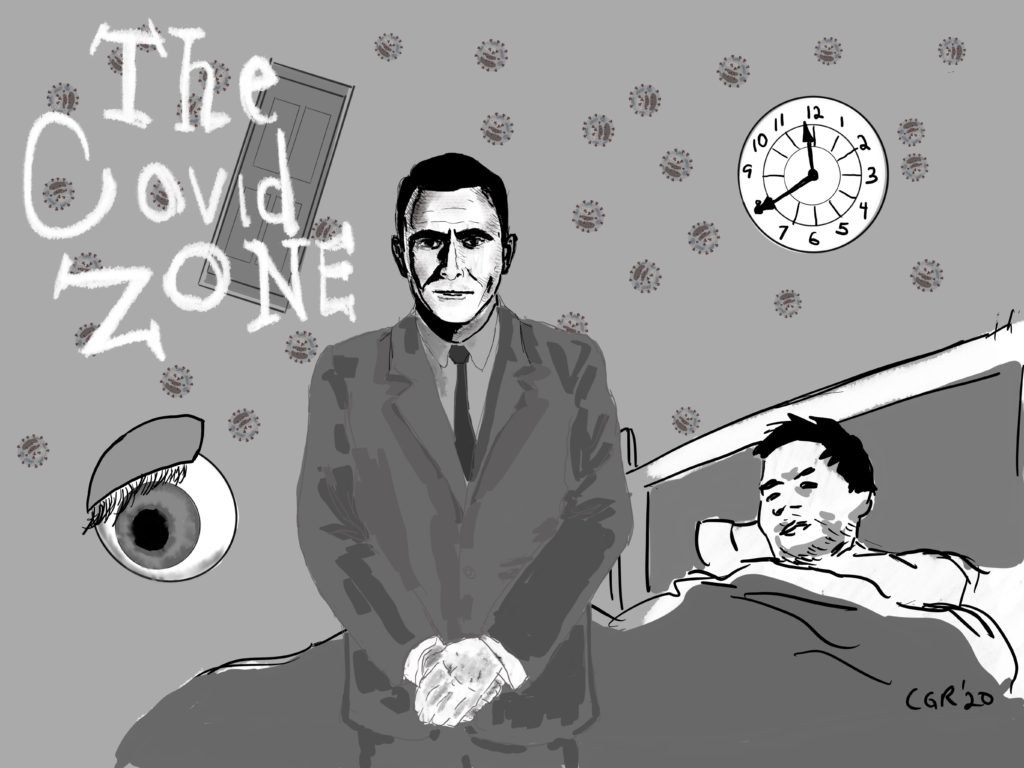
With a little extra effort, I can simulate the experience of drenching my lungs in acid. All I have to do is speed up as I run. My pace right now is a blistering ten minutes forty-three seconds per mile. If I dare to push my pace above that of a slow, geriatric trot, I will experience the aforementioned burn. This is the last remaining effect of my covid-19 infection from six months ago. In other words, six months after infection, my recovery is still incomplete.
Pardon the mild bragging for now since I need to provide some context. At my fastest, I ran a little over thirteen miles at a pace of seven minutes and forty-five seconds. A pace I can only maintain for a minute today I was recently able to maintain for over an hour and a half. The night I experienced my first symptoms—a fever I tried to dismiss—I had been at the gym hours before, doing rounds of push-ups, strict pull-ups, stricter toes to bar and leg lifts. Within two days of that and the day before the official lockdown in New York, my fever spiked to 102.5F. My illness hit its trough just as the crisis crested in New York. With refrigerated trucks situated outside hospitals, waiting for the overflow of bodies, I was trapped inside, for the simple reason that I didn’t even have the energy to sit up.
If I stop to consider the worst part of the experience, I have options to choose. The extreme fatigue was not pleasant. My bed was the only part of the world I saw for weeks. The days seemed endless. The length of the illness was also horrible. From the first symptom to the last traces of the fever, it was three weeks. My cough persisted past that and I didn’t realize at the time that the coughing was emblematic of the damage being done to my lungs. The illness also came in two waves. I thought I was getting better after four days and then I experienced a second phase that was worse than the first.
I experienced intense but short lived pain towards the end, likely due to dehydration, itself due to a severe loss of appetite. Pain to that degree had once compelled me to call 911 so I did so again when the pain was at its worst. The paramedics arrived, all covered up in hazmat attire, unwilling to enter my apartment. They examined me from a distance and recommended that I not accompany them to the ER because I was safer at home. They described the hospital as a petri dish, with covid-19 propagating throughout the entire ER. In time, their advice proved wise. At the time, being turned away by a place I once considered the safest place in New York was terrifying.
On the day of my first symptom, I did seventy-five push-ups, among other exercises. Three weeks later, my first attempt at exercise produced three push-ups, my arms shaking like leaves in high wind. Days after that I attempted to walk a mile. I used to run ten miles without a moment’s thought. That first mile that I walked proved more challenging then ten miles used to be. Two months after the end of my bout with covid-19, I tried my first jog. I could only sustain that slow pace for three quarters of a mile before I had to stop and walk. And it felt like there was a small beast riding my chest, pouring acid into my lungs.
Now six months later, I’ve recovered a good percentage of my strength. The prison style workouts during lock down helped. The small beast on my chest has been gone for months, but I can still make the acid come back if I try too hard—and too hard isn’t very hard at all.
Some people don’t believe in the severity of this illness. Some even seem to think that the illness is a hoax. The damage to my lungs should convince otherwise. Unlike influenza, SARS-COV-2 scars lungs. It’s damage that I assume will heal in time and allow the return of my normal speed, but that’s an assumption and a hope, not a certainty.
I write this now not just as record of my experience but as a reminder and a warning. As the virus spread silently at the beginning of this year, we did not take it seriously. It has felled almost 200,000 in the United States so far. the most of any country in the world. Any cursory reading of the history of pandemics would provide the sobering lesson that pandemics come in waves. The so called Spanish flu came in three major waves, the first coming in the spring of 1918, the second and most lethal one coming in the subsequent fall. As temperatures drop, memories of the crisis fade and exhaustion sets in, we are in danger of repeating the same mistakes our forbears made a century ago.
Let this be a warning. Remember, I had the “mild” version of covid-19. Six months later, I’m still contending with its aftermath.